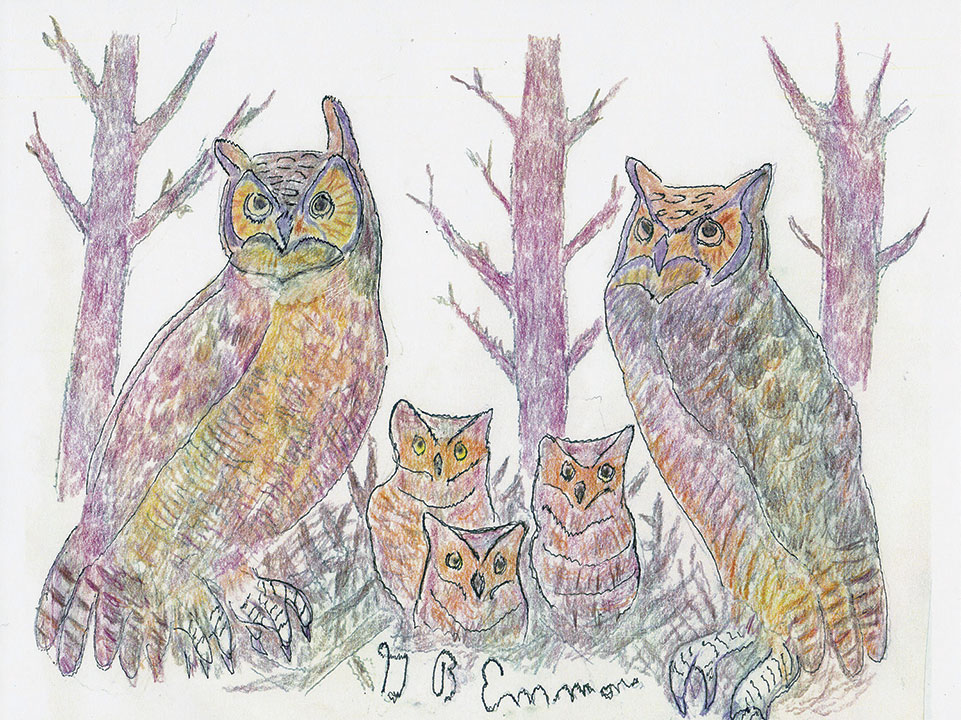The Great Horned Owl is the largest master of the skies along the south-facing shore of Buzzards Bay, relying on both sight and sound for hunting prey, and is a modern living example of convergent evolution from fossils dating back some 50,000,000 years.
It ranges in size equal to the snowy owl, 4½ feet tall with a wingspan of 8 feet in length. It is also equal in ferocity to the bald eagle, and when coming to grips with the other it might or might not come out on top in a fight to the finish.
It is sometimes called a tiger owl with tufted ears and a bright yellow-eyed, ferocious stare taking on porcupines, snakes and coyotes with fatal results for both prey and predator. If you have recently heard deep hooting on freezing winter nights, they hold the seasonal record of being the first to start nesting in early February, as in my illustration with both parents and two or three young already hatched out.
Both parents take part in selecting nesting sites frequently left vacant by other birds, 20 to 60 feet off the ground, sometimes on a cliff ledge or broken-off tree stump by adding a few sticks and branches as a roosting platform. Both parents provide small mammals such as mice, rats, rabbits, ground squirrels, lizards, frogs, and some birds, until they are ready to fly at two months to begin hunting on their own.
Watching young owls being encouraged to fend for themselves is so entertaining that some avid bird watchers in your neighborhood may have considered putting up a nest box to attract a breeding pair of adults. Be sure to attach a guard across the entry to prevent predators from raiding eggs and vulnerable new hatchlings. In bright moonlight, the presence of even other species of owls on your property such as the saw-whet tiny owl add a quintessential, nocturnal, storybook ghostly spirit as in the Harry Potter superstition series.
The first-hand realistic exposure in the study of owls like the great-horned variety and others will fascinate you and yours by the spiritual and scientific environmental awareness brought to your attention on silently feathered wings of the mysterious avian night nocturnal.
By George B. Emmons
